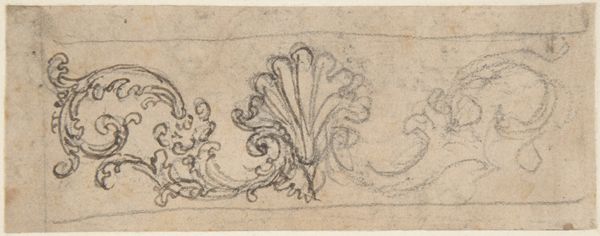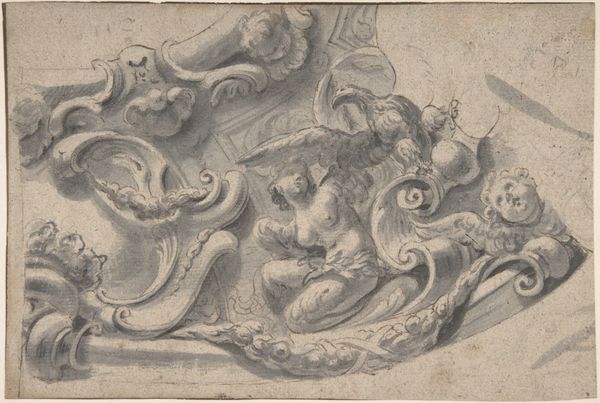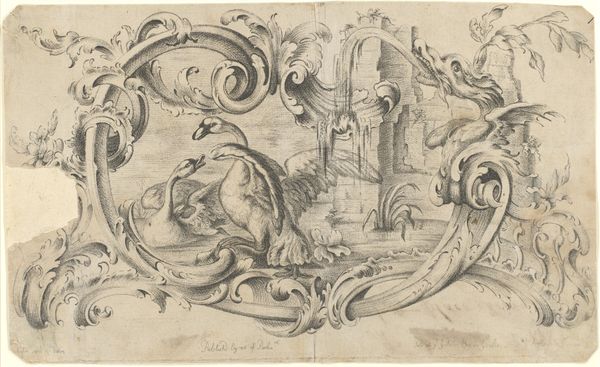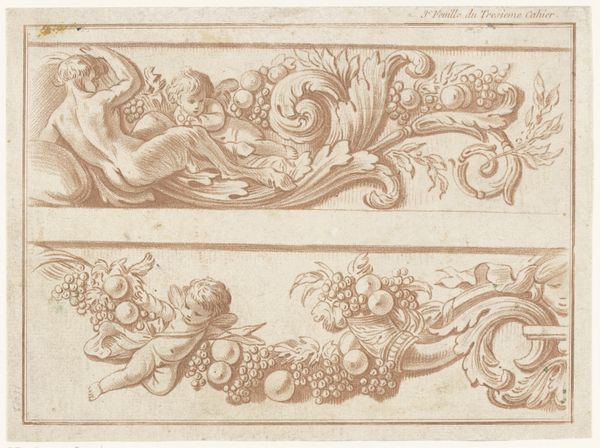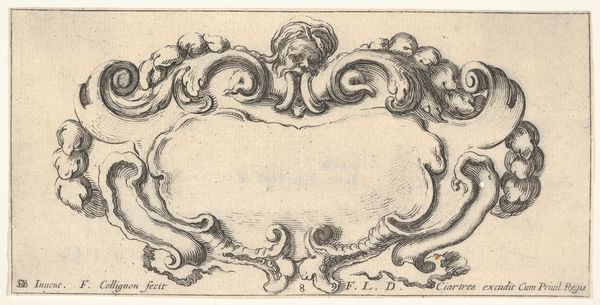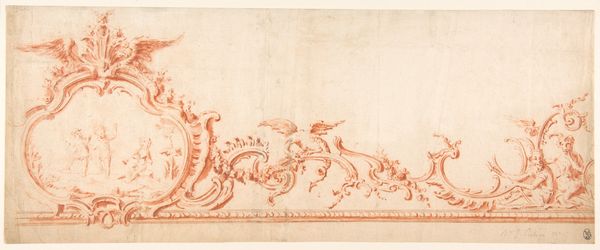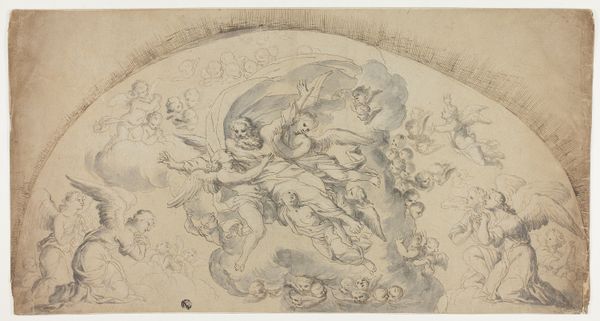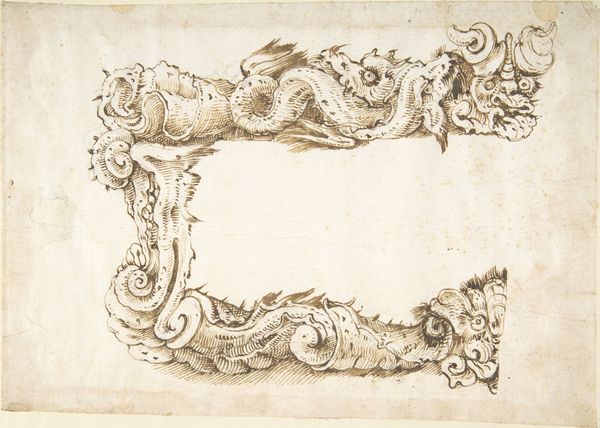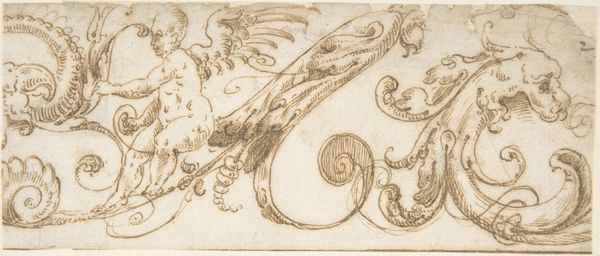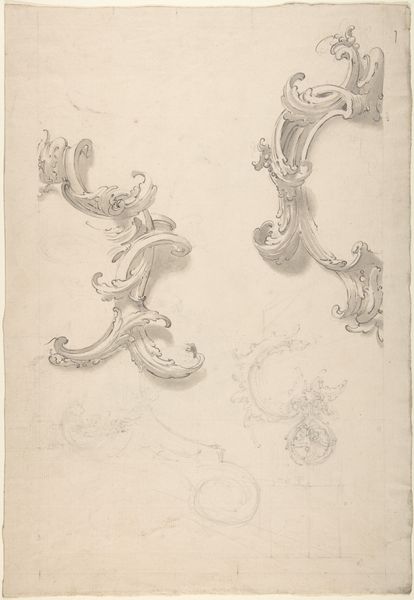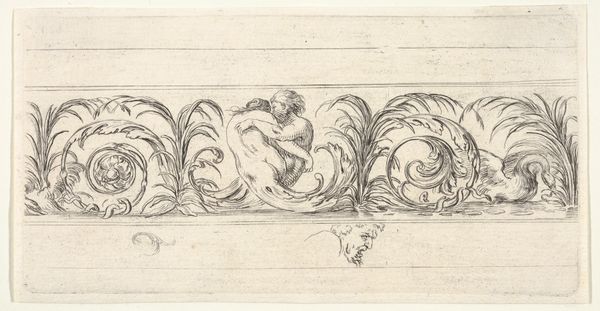
Designs for a Table with Three Variations for the Shape of the Supports 17th century
0:00
0:00
drawing, ink, pencil
#
drawing
#
baroque
#
form
#
ink
#
geometric
#
pencil
Dimensions: 5 1/2 x 9 1/4 in.
Copyright: Public Domain
Curator: Here we have a 17th-century drawing, "Designs for a Table with Three Variations for the Shape of the Supports." Its medium is ink and pencil. Look closely; it’s at the Metropolitan Museum of Art. Editor: Immediately, the dynamism strikes me. These sketched mythological creatures holding the table are far from static; they imply a social tension and the dynamics of those they were intended to serve. Curator: Indeed. Consider the baroque style, marked by dynamic movement, ornate detail, and dramatic scale. Here, though, the lack of color underscores form. Notice the artist uses the lines to generate volume and directionality, all converging in a central vanishing point that directs our vision throughout. Editor: Let’s not ignore the creatures themselves. Their presence, especially sphinx-like figures with ambiguous human-animal forms, speaks to issues of hybridity and shifting identities prevalent in social-political spheres, mirroring the negotiations of power occurring during that era. Tables, objects for communal dining and aristocratic display, exemplify social inequalities. Who gets to eat, and on what surfaces are their meals served? Curator: Those forms you're noting aren’t random; they’re integral to the baroque language—the play of light and shadow achieved solely by pen and ink on the supports, imbuing a three-dimensional feel onto a two-dimensional plane. Observe how this meticulous attention transforms mundane materiality to an elevated design form. Editor: While the artist employs certain figural forms, there remains fluidity. The pencil/ink sketch lacks finality; it serves less as blueprint and more as a stage, asking the eventual viewer and patron about their intended usage or vision of such display—or even if those figures in question were allowed at that table. It opens considerations regarding what designs serve—beyond structural functionality. Curator: Fascinatingly observed! In the final form, will the weight of service and support overshadow what rests above—or will the structural design stand as metaphoric base or beacon. Editor: Well put. In a simple drawing of design, the question remains, for who are such tables laid—then as now.
Comments
No comments
Be the first to comment and join the conversation on the ultimate creative platform.
